A Guidemap for Finding Real Salt
All photos by Shannon
We cook with salt every day and if you’re not cooking with it, then someone else is adding salt in your food for you. Maybe the wrong kind.
Most of the discussions surrounding salt are negative. We often hear about lowering our intake levels, but then aren’t we missing the deeper question: “what salt should we be eating?” In fact, there are quite a few professionals who argue for the health benefits of the right kind of salt.
In attempting to eat a real food diet, it makes sense to find the healthiest form of this everyday ingredient.
So what is a healthy salt?
All salt comes from either the sea or underground mines. All salts are predominantly made up of sodium chloride, but their are vast differences between refined and unrefined salts.
Basically what separates refined salt from unrefined salt is what is added and what is taken away.
Finding The Best Salt
When you look for salt in the grocery store you will find an overwhelming number of options. The following is a guide map.
Iodized Table Salt
This is the most common form of salt consumed today. It is granular, stark white, and lives in most salt shakers across the country. Table salt contains iodine and additives like sodium silicoaluminate or magnesium carbonate to improve pour-ability. These additives are not required to be listed as ingredients on the label.
It is like the white bread of salts – chemically stripped of all things valuable and then “enhanced” by synthetic vitamins and minerals. It’s just not a whole food.
Kosher Salt
Kosher salt is not “kosher” itself, but is used to make meats kosher and is commonly called “koshering” salt. It is a larger crystal than the granular table salt and does not contain as many additives as table salt.
It does, however, contain sodium ferrocyanide which…
“is not especially toxic because the cyanides are tightly bound to the metal, although it can react with acid or photodecompose to release hydrogen cyanide gas.”
A little scary, and again not a whole food.
Sea Salt – Refined & Unrefined
Most sea salts sold in supermarkets are white, large-grained, and still somewhat refined. It is hard to tell the difference between a refined sea salt and an unrefined one without doing a little research first. But most of us aren’t going to Google from aisle four of the grocery store.
A few things to look for:
- Color. While refined sea salts are white, almost all unrefined sea salts have a color to them. They are beige, pink, gray, red, or even black. The colors come from the mineral content the salt receives from where it has been harvested.
- Moisture. Some unrefined sea salts are packaged with some of their moisture still intact. This keeps all of the trace minerals – over 80 in some cases – intact.
- Mineral Content. Look at the packaging and see what the salt’s composition is. It should not be entirely sodium chloride. You want to find numerous trace minerals – the larger the quantity, the better.
The Takeaway
There are different brands of unrefined sea salt out there, all at different prices. I have seen Celtic Sea Salt come Dr. recommended, as well as a few other brands like Pink Himalayan and Redmond’s Real Salt. Buying them from the grocery store in small quantities can be expensive, though. We buy in bulk when we find a sale. We think of our grocery budget as an investment, not just an expenditure.
The trace minerals found in unrefined salt work synergistically with the sodium chloride to form a nourishing, whole food. As with all foods, it is best found in it’s God-given state, unchanged by man.
What type of salt do you use and why?

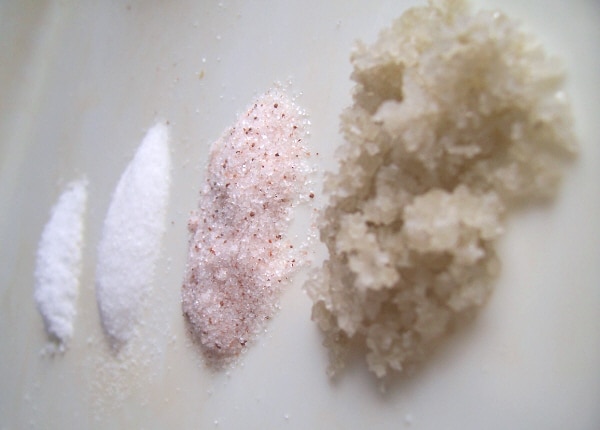
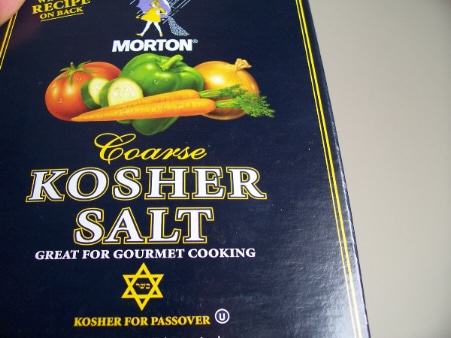

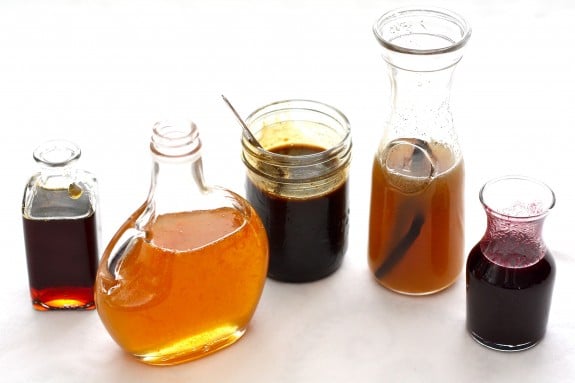
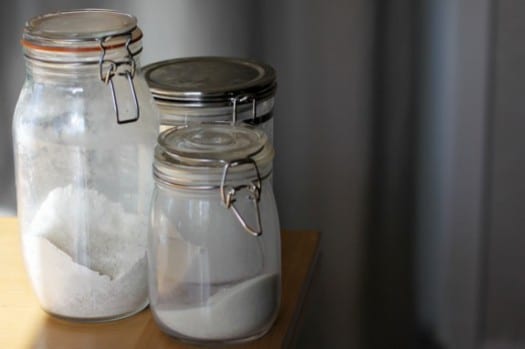
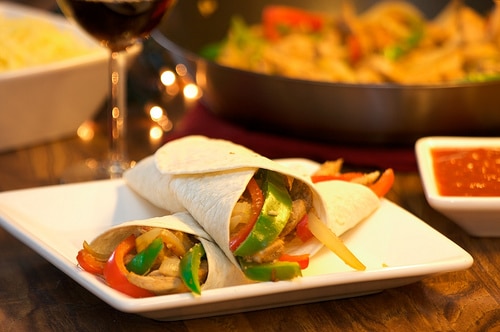
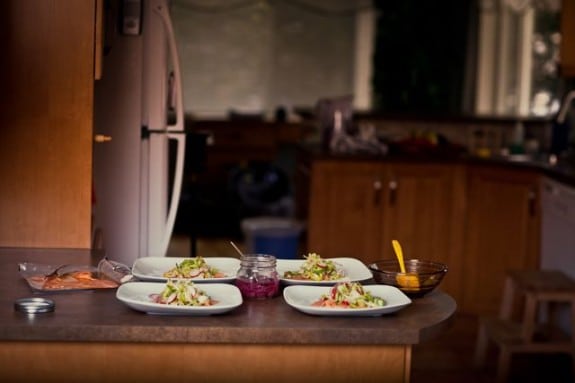


Excellent topic. I typically use kosher and sea salt although I’m now going to rethink my kosher salt usage. I prefer the taste of both which is why we keep those in the kitchen as opposed to table salt. I really haven’t given it too much thought but I think I will now. Thanks!
.-= Jan (Family Bites)’s last blog: Lavender Roasted Fingerling Potatoes =-.
Jan – I, too, used kosher salt before switching to Celtic.
Thank you for making the switch!
I use one of those Spice Island’s Sea Salt grinders simply because we like the taste better. Would love to look for some sea salt in bulk now!
.-= Jenny Rebecca’s last blog: a Parker post =-.
Jenny Rebecca – I order mine from celticseasalt.com.
We use Celtic sea salt because it was recommended by my naturopath a few years back.No more swelling of hands or ankles~ except when we go out to eat! Most restaurants do not use “whole” salt. Thanks for bringing up this very important subject!
Marmydear – That is exactly why we use Celtic Sea salt now – our chiropractor and osteopath highly recommended it. We went out of town this past weekend and ended up eating some table salt. My face looked so puffy until just this morning.
Wow. I feel smarter for reading that. Thank you! We can get sea salt through our organic food delivery service – I’ll be ordering some for us now.
Thank you for the salt lesson 🙂
.-= Kara’s last blog: Head of the Class: Eco-Friendly Lunch Containers for a Smarter Planet =-.
Kara – You’re welcome. Thank you for the kind words.
Could you offer some guidelines for using these coarser salts in recipes? I know the larger crystals make them measure differently by volume, and how much do I account for the different flavors? I was recently given some black Hawaiian volcanic salt and some pink Himalayan salt as a gift but I don’t feel any confidence in employing it as I would with table salt.
.-= Robin (noteverstill)’s last blog: For the record =-.
Robin – Great question! As far as measurements go, whenever a specific amount is called for I grind it to a fine grain using a ceramic mill (like a pepper mill). The flavor of sea salt isn’t strong by any means so it will not impart a flavor to baking or cooking, though it has a nice clean flavor on salads and raw foods. I hope that helps!
I grind kosher salt for most of my everyday cooking, but I have a big container of wonderful Himalayan Pink Salt for all other more creative foods. I love that stuff…
.-= Elizabeth’s last blog: Easy, Quick Chicken Fajitas =-.
As with everything, you really do need to check the labels on salt, even sea salt or kosher salt. It’s not unheard-of for sea salts to have just as many added ingredients or to be as highly processed as iodized salt, so you really do need to check the labels. There are also different kinds of sea salts, some of which are better suited for cooking than others (for example, fleur de sel is more often used as a finishing touch on a dish, rather than to season throughout cooking). It takes some experimenting, and balancing the grocery budget!
.-= Rachel’s last blog: Lent: Don’t Give Up Chocolate! =-.
Thanks for the information and for doing the research for us. I noticed once that my ‘table salt’ contained sugar. Go figure. I’ll have to do a bit of hunting around , but I’m going to try to find that unrefined sea salt you told us about. I also liked your comment about grocery bucks being an investment. You’re a wise lady! Thanks!
Make sure you get salt with iodine from what I read you can get thyroid problems or cancer without it and that unrefined salt never Morton salt can actually be better for your arteries and heart than blood pressure pills which can make your arteries sticky and rough (catch plague ) easier read the article on the worst blood pressure pills in the world and switch to olive oil and lay off the sugar and live a long long life. And she talks about salt and how the world was miss led about whole milk beef fat and real butter that can actually clean your arteries rather than corrupt them like margarine cooking oils and these fake salt dashes. But read for your self. I like your article thanks
Very informative post, Shannon, thank you!
I must admit to a weakness for fleur de sel–on almost anything. Baked potato, sliced cucumber…and even chocolate pudding! Here is my favorite:
http://www.lesaunierdecamargue.com/
Right there with you Aimee, I was just going to have my say on it, but you already did! I buy mine through Williams and Sonoma.
.-= Destri’s last blog: The Bullet List {Disney from Ruffles and Stuff} =-.
I’m with Aimee on the Fluer de sel. That’s our go-to in the house, along with kosher. I’ll be checking that label tonight!
Where do folks stand on salt on their kids’ food? We let our 3.5 year old salt her salad and veg, if she asks. My mom is shocked at this. I feel comfortable doing it because we eat so little food that comes in a box or can so she isn’t exposed to much salt at all in her daily diet.
.-= Cheryl Arkison’s last blog: Texas Sunshine =-.
Cheryl – I definitely recommend salting your children’s food just as you would your own. Babies need the minerals found in unrefined sea salt for brain development. Also, it is so much easier to feed your little ones real foods when they taste good. My boys devour broccoli, cauliflower, cabbage, and every other “icky” food because they actually taste good with a little bit of butter and sea salt.
When cooking or baking with sea salt, do you need to adjust the amount the recipe calls for?
I usually reduce it by a half, Angela.
I love salt so I especially appreciate this post. For a culinary perspective on cooking/seasoning with different kinds of salt, I recommend reading this (it explains when to use kosher, sea salt, and also flavored salts):
http://www.breakawaycook.com/blog/2009/08/19/on-the-massive-importance-of-salt/
We made the switch to primarily using sea salt (unrefined) some years back, we have a variety of salt types in our home. It really is cool how you can taste the difference in salt, it’s not an ingredient I think most people even think about unless they are thinking of process foods packed with sodium not real food.
Wonderful post on something so simple – but something that we all use every day without giving much thought. I feel so much more educated after reading, Bravo!
I’ve always used coarse sea salt because I like the way it feels when I sprinkle it, and I like seeing the salt flakes on foods like tomato sandwiches. – I never gave it much though than that!
Wow, this is so helpful! I just learned that sea salt was considered a “whole food” versus table salt, but I didn’t know there was a difference in sea salts.
I use kosher and some sea salt. I’ve been meaning to look into the refined vs unrefined sea salt issue. Thanks for getting me started!
Great informative post Shannon!
Salt is good stuff. I’ve avoided iodized table salt for years as the iodine is bad for me. Sea salt is lovely, especially the big, crunchy flakes. I recently discovered a lovely treat for those who like their sweets with a salty edge: vanilla finishing salt http://www.atthemeadow.com/shop/index.php?main_page=product_info&products_id=362. This stuff us is absolutely heavenly sprinkled over chocolate chip cookies, butterscotch pudding, and (best of all) hot buttered rum. Definitely a splurge but a little goes a long way.
It is really cool reading about this! I love the taste of good and healthy salt and have come to hate good old fashioned salt taste. So, this is really neat to learn! Thanks for writing. 🙂
.-= Francis’s last blog: Chef Knife Sets =-.
I believe ‘real salt’ helped to the body? My favs Celtic sea salt and black salt.
I think the bible is telling us to use more salt…
I only use himalayan pink salt which is very healthy and pure and also tastes amazing there’s no comparison between table salt and pink salt as far as salt goes. Pink salt gives a very unique flavor to my food and i don’t have to use as much table salt to season my food. I also use persian blue salt which is the rarest salt in the world. It is harvested from a single banding running through the white base stock of an ancient salt lake in Iran. I think that blue salt is ever helthier tha pink slat and tastes ever better. It’s pretty damn expensive though.
I’ve been looking for a healthy salt but decided against the himalayan salt as besides the healthy minerals it also contains lead, mercury, uranium & plutonium amongst other toxic ingredients.
Hi Shannon
Thanks for the information, very informative. I have had your site bookmarked for 6 months now
I am a pescatarian, but i am always tweaking my diet and educating my family as i learn more of improvement.
I was researching salt, specifically healthy alternatives.
Great research you provided. thanks again, and much success.
Hello Shannon
How are you? Thanks for sharing about salt but I would like to say whatever you post here its only difference between the salt or little knowledge about salt but there is not you specified about salt which peoples using ever day and its could be healthy I am from India and I am pure vegetarian I am using now iodized table salt but before I read on internet about salt and I found Himalaya pink salt is good I am asking you can you suggest me which salt is really good to eat ever day in meal like salad, cooking vegies, making beans and rice etc. Please send me email thanks you very much gbu
I switched from typical table salt about 2 years ago, once I realized what typical morton salt actually was. I have found that regular unrefined sea salt actually tastes so much better! Some people refer to it as gourmet sea salt or chef salts, but I do believe it should be in every kitchen and restaurant. Maybe if restaurants changed their salts set at the table it would help inform those who have yet to find out there is a difference in salts. Thank you for this well written, informative post about salt! I buy all of my unrefined sea salts from Salts Worldwide They have varieties of sea salts available from places across the world! I enjoy the Fleur de Sel Sea Salt – simply amazingly pure unrefined salt from the earth!
I would like to switch from table salt to sea salt but understand that sea salt has less iodine than table salt and I am worried about not getting enough iodine or too much. How do I know if I am getting enough or too much?
I sell a salt called Master Salt that is a mix of 24 unrefined salts from artisanal salt companies from across the world. It’s a mix of sea salt, lake salt, mountain salt, spring salt, river salt and desert salt..all unprocessed, unrefined, wild natural salts. Full spectrum minerals.
I always believed that sodium chloride was the whole salt we needed,I’m in my retirement age,well I think better late than never.now I’m going to use unrefined real salt(minerals intact)thanks for the info,and one thank to my self.